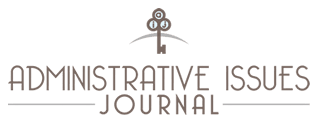
Abstract
Leaders in higher education regularly find themselves at the intersection of change, torn between their institution’s history and culture, the intrinsic value of education, market needs, and the desires of alumni, current, and prospective students. Higher education is often labeled reluctant to change, and many believe any change initiative not aligned with the institution’s culture is almost certain to fail. This study provides evidence that leaders in higher education can implement change that is incongruent with organizational culture while maintaining harmony among the institution’s ideals and constituents. University X, a medium-sized, highly regarded public institution located in a rural area, implemented its first fully online degree program, which was widely perceived as being incongruent with the organization’s culture. A detailed analysis of eight environmental factors and an adaptation of Kotter’s (1996) eight-step change model contributed to the overall success of this change. The keys to implementation were developing an in-depth understanding of the culture while ensuring there was both a need for change and adequate support among stakeholders. Developing a group to champion and sustain the initiative was also critical. The common thread throughout the entire change process was the frequent and effective communication maintained by the organizational leaders. The culture shift initiated by the change also allowed the institution to move quickly to transition to alternative teaching methods during the COVID-19 pandemic of 2020.
Recommended Citation
Petersen, Steven A. and Bartel, Susan M.
(2020)
"When Culture and Change Collide In Higher Education: A Case
Study at One University,"
Administrative Issues Journal: Vol. 10:
Iss.
2, Article 2.
Available at:
https://dc.swosu.edu/aij/vol10/iss2/2
Please consider contributing an article to Administrative Issues Journal, our submission policy: http://www.swosu.edu/academics/aij/guidelines.aspx
